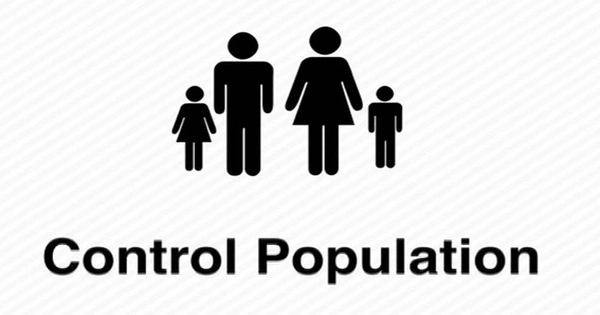High infant mortality rates can actually contribute to a higher global human population, as counterintuitive as it may seem. This is because in societies with high infant mortality rates, families tend to have more children in order to ensure that at least some survive to adulthood. This can lead to larger family sizes and ultimately a higher population growth rate.
New research showing that high infant mortality rates are contributing to the world’s population growth supports arguments for greater access to contraception and family planning in low- and middle-income countries.
In an article published in PLOS ONE, researchers led by Professor Corey Bradshaw, Matthew Flinders Professor of Global Ecology at Flinders University, and Peter Le Souf, Professor of Paediatrics at The University of Western Australia discovered that higher baby death rates and larger household sizes (as an indicator of population density) are associated with higher fertility rates.
According to Professor Bradshaw, the first study of its kind provides a compelling argument that the United Nations Sustainable Development Goals for reducing infant mortality can be accelerated by increasing access to family planning.
Our results show the best pathway toward reaching these targets is by providing readily available and high-quality family-planning services. These actions will not only to decrease fertility rates, they will also to lower the number of unintended pregnancies, infant deaths, and maternal deaths.
Professor Bradshaw
“Although it may appear counterintuitive, higher infant mortality rates are associated with higher population growth because the more babies a woman loses, the more children she is likely to have. Family planning, including access to quality contraception, allows women to better plan their pregnancies and thus reduce infant mortality, thereby reducing the so-called “replacement” or “insurance” effect “According to Professor Bradshaw.
“We evaluated six conditions thought to influence a woman’s fertility – availability of family planning, quality of family planning, education, religion, mortality, and socio-economic conditions, across 64 low- to middle-income countries.”
The research specifically tested whether:
- increasing the availability of family planning is associated with reduced fertility;
- increasing the quality of family-planning services is associated with reduced fertility;
- increasing years of female education is associated with reducing fertility;
- increased fertility is observed in countries with a higher prevalence of adherents of Catholicism or Islam, two main religions that expressly dictate elements of fertility and/or family structure;
- a larger mean household size is positively correlated with fertility, and lower socio-economic conditions; and
- higher mortality (both infant and maternal) is associated with higher fertility.
Co-author Dr Melinda Judge from The University of Western Australia’s Medical School says, “Keeping babies alive actually reduced average fertility and helps put the brakes on population growth. Essentially, higher infant mortality and a larger household size increased fertility, whereas greater access to any form of contraception decreased fertility.”

“Intriguingly, female education, home visits by health workers, the quality of family planning services, and religious adherence all made little, if any, contribution on a national scale.”
According to Professor Bradshaw, the United Nations Sustainable Development Goals 3 (good health and wellbeing) and 5 (gender equality) emphasize the fundamental right to control one’s sexual and reproductive health through universal access to family planning.
The world is not on track to meet Goal 3, which calls for reducing global maternal mortality to less than 70 per 100,000 live births by 2030 and eliminating preventable deaths among newborns and children under the age of five.
“Our results show the best pathway toward reaching these targets is by providing readily available and high-quality family-planning services. These actions will not only to decrease fertility rates, they will also to lower the number of unintended pregnancies, infant deaths, and maternal deaths.
“These findings support the idea that, in order to encourage continued declines in global fertility, both infant survival rates and access to contraception should be increased,” Professor Bradshaw explains.
According to co-author Chitra Saraswati of The University of Western Australia’s Medical School, “Recommendations for infant mortality reduction measures emphasize improving antenatal care quality, increasing the number of trained healthcare staff at births, and improving postnatal care for both infants and mothers. Given the evidence that large households can harm children’s health, improving living conditions to alleviate high-density living could result in lower fertility indirectly.”
“Allowing parents to choose family planning by making modern contraception readily available can be expected to improve infant survival and reduce maternal mortality. Because parents can plan and space their births, having fewer children has the potential to facilitate better investment in the overall health and well-being of families. It emphasizes the significance of providing access to contraception as a direct contributor to lower infant mortality.”
“If we do not act now to achieve the United Nations’ Sustainable Development Goals, fertility will rise, more children will die, and more women will die as a result of birth-related causes,” Professor Bradshaw concludes.














